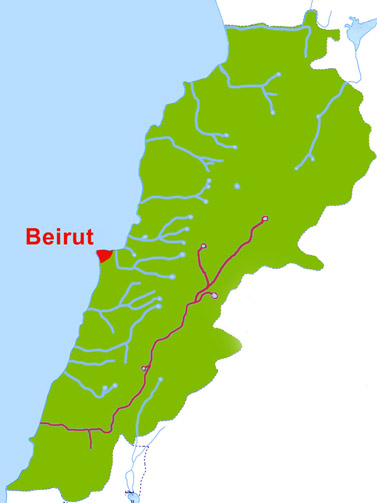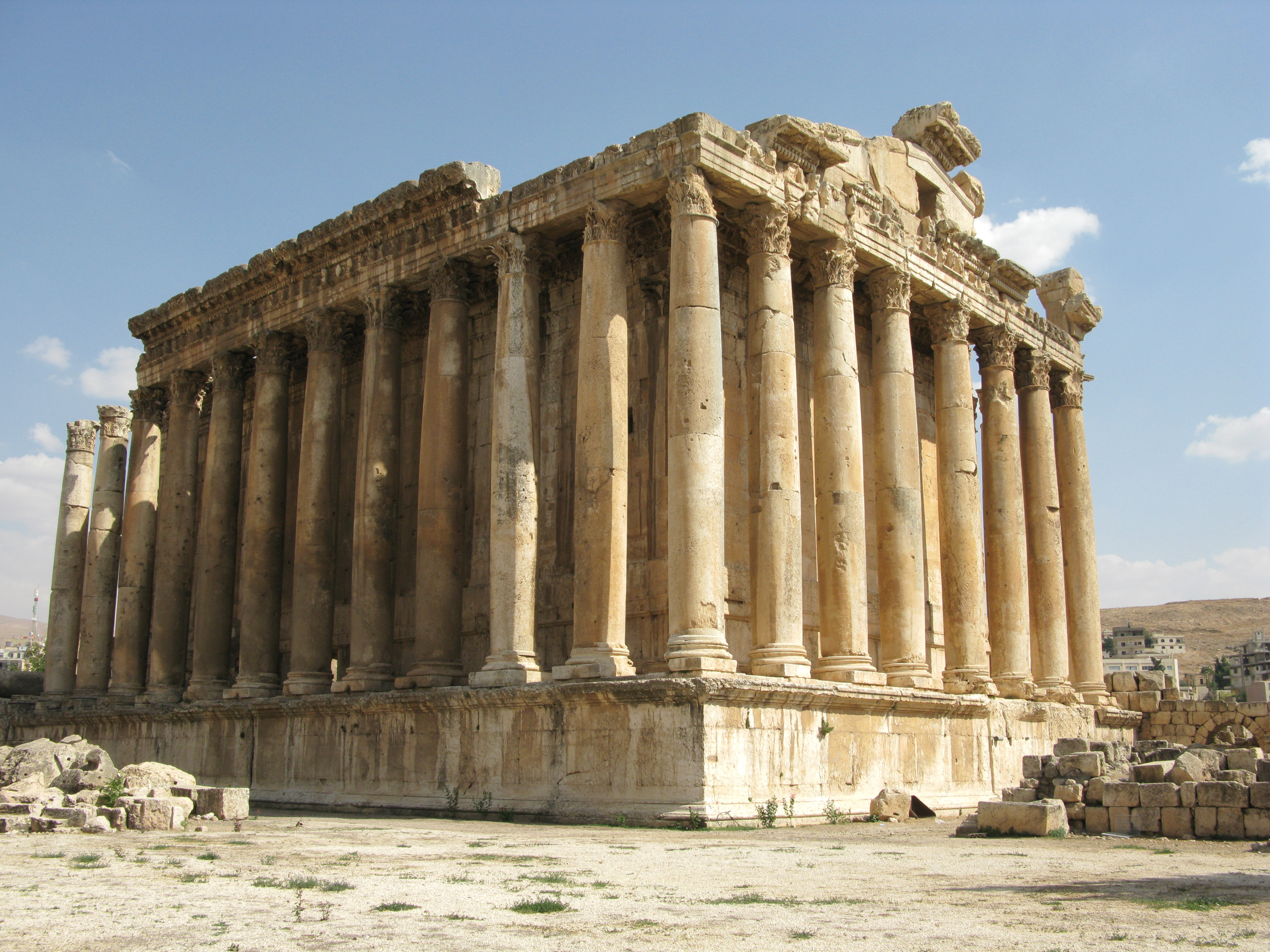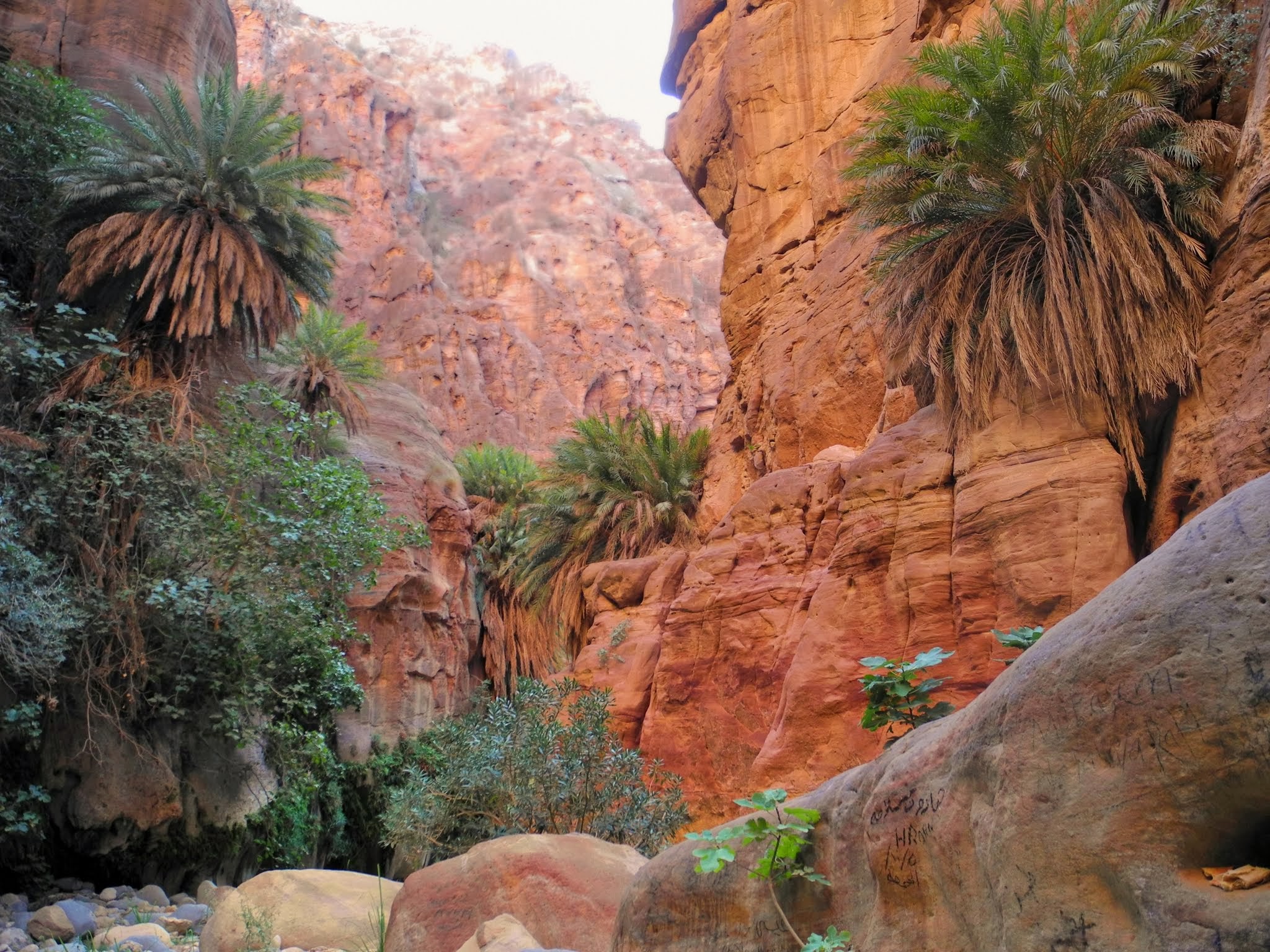|
Qaraoun
Qaraoun is a Lebanese village, 85 km from Beirut, known for its Lake Qaraoun in the Beqaa Valley formed by the El Wauroun Dam built in 1959. It is an ecologically fragile zone in the Western Beqaa District. The village lies about 800 m above sea level. The dam is located nearby on the Litani River. Geography The village is delimited by Majdel Balhis on the east, Aitanite on the west, Baaloul on the north and Sohmor on the south. The ecoregion of the village has now a land area of 1460 ha, with 1100 ha of it under agriculture including 400 ha under irrigation and the balance agricultural area is rainfed. When the El Qauroun Dam was built on the Litani River (the longest river in Lebanon) in 1959, Qaraoun village, lying on its left bank transferred an area of 740 ha for the development of the project. The ecoregions habitat composition is a delicate interface of dry lands with the riverine and lacustrine zones. Demographics, economy and development The population of the vil ... [...More Info...] [...Related Items...] OR: [Wikipedia] [Google] [Baidu] |
Lake Qaraoun
Lake Qaraoun ( ar, بحيرة القرعون / ALA-LC: ''Buḥayrat al-Qara‘ūn'') is an artificial lake or reservoir located in the southern region of the Beqaa Valley, Lebanon. It was created near Qaraoun village in 1959 by building a concrete-faced rockfill dam (the largest dam in Lebanon) in the middle reaches of the Litani River (longest river in Lebanon). The reservoir has been used for hydropower generation (), domestic water supply, and for irrigation of . The annual surface water flow in the Litani River received at Lake Qaraoun is . This flow is used for generating hydroelectric power of 600 GWh at three hydroelectric power stations at Markaba, Awali and Jun with the total installed capacity of . During the dry season, of water is diverted from Markaba power station to meet the needs of the Kassmieh irrigation project. The lake is a habitat for some 20,000 migratory birds which visit it annually. Geography Note 420 million cubic meters is approximately 15 billion ... [...More Info...] [...Related Items...] OR: [Wikipedia] [Google] [Baidu] |
Heavy Neolithic
Heavy Neolithic (alternatively, Gigantolithic) is a style of large stone and flint tools (or industry) associated primarily with the Qaraoun culture in the Beqaa Valley, Lebanon, dating to the Epipaleolithic or early Pre-Pottery Neolithic at the end of the Stone Age. The type site for the Qaraoun culture is Qaraoun II. Naming The term "Heavy Neolithic" was translated by Lorraine Copeland and Peter J. Wescombe from Henri Fleisch's term ''"gros Neolithique"'', suggested by Dorothy Garrod (in a letter dated February 1965) for adoption to describe the particular flint industry that was identified at sites near Qaraoun in the Beqaa Valley. The industry was also termed "Gigantolithic" and confirmed as Neolithic by Alfred Rust and Dorothy Garrod. Characteristics Gigantolithic was initially mistaken for Acheulean or Levalloisian by some scholars. Diana Kirkbride and Henri de Contenson suggested that it existed over a wide area of the fertile crescent. Heavy Neolithic industry ... [...More Info...] [...Related Items...] OR: [Wikipedia] [Google] [Baidu] |
Qaraoun Culture
The Qaraoun culture is a culture of the Lebanese Stone Age around Qaraoun in the Beqaa Valley. The Gigantolithic or Heavy Neolithic flint tool industry of this culture was recognized as a particular Neolithic variant of the Lebanese highlands by Henri Fleisch, who collected over one hundred flint tools within two hours on 2 September 1954 from the site. Fleisch discussed the discoveries with Alfred Rust and Dorothy Garrod, who confirmed the culture to have Neolithic elements. Garrod said that the Qaraoun culture ''"in the absence of all stratigraphical evidence may be regarded as mesolithic or proto-neolithic"''. (5,000 to 20,000 years Before Present Before Present (BP) years, or "years before present", is a time scale used mainly in archaeology, geology and other scientific disciplines to specify when events occurred relative to the origin of practical radiocarbon dating in the 1950s. Becaus ... ). References {{Reflist Mesolithic cultures of Asia Neolithic cultures of A ... [...More Info...] [...Related Items...] OR: [Wikipedia] [Google] [Baidu] |
Litani River
The Litani River ( ar, نهر الليطاني, Nahr al-Līṭānī), the classical Leontes ( grc-gre, Λέοντες, Léontes, lions), is an important water resource in southern Lebanon. The river rises in the fertile Beqaa Valley, west of Baalbek, and empties into the Mediterranean Sea north of Tyre. Exceeding 140 km in length, the Litani River is the longest river in Lebanon and provides an average annual flow estimated at 920 million cubic meters. The waters of the Litani both originate and flow entirely within the borders of Lebanon. It provides a major source for water supply, irrigation and hydroelectricity both within Southern Lebanon, and the country as a whole. Etymology The Litani River is named after the Ugaritic deity Ltn (pronounced ''līyitānu''), a seven-headed sea serpent and servant of the sea god Yam. The ''ī'' in the Lebanese name preserves the hypothesized ''ī'' in Ugaritic. The river that winds and coils like a serpent through the Beqaa Valley ... [...More Info...] [...Related Items...] OR: [Wikipedia] [Google] [Baidu] |
Western Beqaa District
Western Beqaa District ( ar, قضاء البقاع الغربي) is an administrative district in the Beqaa Governorate of the Republic of Lebanon. The capital is Joub Jannine which has a population of 12,000. Main cities and towns West Beqaa has a few main cities such as: * Machghara * Joub Jannine * Qaraoun * Kafraiya * Kherbet Qanafar * Dahr El Ahmar Other towns Other smaller villages located in West Beqaa * Aana * Ain Zebdeh * Aitanite * Al Manara * Al Rafid * Baaloul * Bab Maraa * Chabraqiyet Aammiq * Chabraqiyet Tabet * Dakouh * Deir Ain Jaouzeh * Deir Tahnich * Ghazzeh * Haouch Aammiq * Haouch al Saalouk * Haouch El Saiyad * Haoush al Haremma * Kamed El Laouz * Khiara * Lala * Libbaya * Mansourah District * Marj, Lebanon * Mazraat El Chmis * Meidoun * Nasrieyh * Tal El Akhdar * Tal Zaazaa * Tal Znoub * Rawda * Saghbine * Sohmor * Sultan Yaacoub Tahta * Sultan Yaacoub Fawqa * Yohmor * Zilaya Zilaya ( ar, زلايا), is a village located in the West ... [...More Info...] [...Related Items...] OR: [Wikipedia] [Google] [Baidu] |
Beqaa Valley
The Beqaa Valley ( ar, links=no, وادي البقاع, ', Lebanese ), also transliterated as Bekaa, Biqâ, and Becaa and known in classical antiquity as Coele-Syria, is a fertile valley in eastern Lebanon. It is Lebanon's most important farming region. Industry also flourishes in Beqaa, especially that related to agriculture. The Beqaa is located about east of Beirut. The valley is situated between Mount Lebanon to the west and the Anti-Lebanon Mountains to the east. It forms the northeasternmost extension of the Great Rift Valley, which stretches from Syria to the Red Sea. Beqaa Valley is long and wide on average. It has a Mediterranean climate of wet, often snowy winters and dry, warm summers. The region receives limited rainfall, particularly in the north, because Mount Lebanon creates a rain shadow that blocks precipitation coming from the sea. The northern section has an average annual rainfall of , compared to in the central valley. Nevertheless, two riv ... [...More Info...] [...Related Items...] OR: [Wikipedia] [Google] [Baidu] |
Sohmor
Sohmor ( ar, سحمر) is a small town in the Beka'a Valley of Lebanon, situated in the Western Beqaa District and south of the Beqaa Governorate. It lies south of Lake Qaraoun on the Litani River. It lies southwest of Machgara, northeast of Ain Et Tine, north of Yohmor, west of Mazret Al Chmis and northwest of Libbaya. History In 1838, Eli Smith noted ''Sahmur'' as a village on the West side of the Beqaa Valley, north of Yohmor. It was the site of the 1984 Sohmor massacre The 1984 Sohmor massacre, also known as the first Sohmor massacre, took place on 20 September 1984 when the South Lebanon Army, backed by the Israel Defence Forces, fired guns and killed 13 civilians in the Lebanese village of Sohmor. Background ... and the 1996 Sohmor massacre. References Bibliography * External linksSohmor Localiban Video Populated places in Western Beqaa District {{Lebanon-geo-stub ... [...More Info...] [...Related Items...] OR: [Wikipedia] [Google] [Baidu] |
Aitanite
Aitanite/ Aitaneet (عيتنيت) is a village in Lebanon, in the West Beqaa region. Aitanit is located in the southern region of Lebanon, particularly the Beqaa Valley. Aitanit is also located about 1070 meters above sea level and is currently on the edge of a mountain. Below the mountain and the village is Lake Quaroun (Litani river). In addition, the villages overlooks the village Qaraoun, which is just across the lake. The whole region around the village are farmlands and pastures filled with grape, olive trees, and many other fruit plants. History In 1838, Eli Smith noted Aithenit '' as a village on the West side of the Beqaa Valley, next to '' Bab Mari'a''.Robinson and Smith, 1841, vol 3, 2nd appendix, p141/ref> Aitanit has approximately 880 residents. In the municipal Lebanese elections of 2004, its accounted 3,263 registered voters of which 1,784 actual voters. If the total number of Aitanite citizens who have emigrated were included the figure would be nearer to 20,0 ... [...More Info...] [...Related Items...] OR: [Wikipedia] [Google] [Baidu] |
Henri Fleisch
Reverend Father Henri Fleisch (1 January 1904 – 10 February 1985) was a French archaeologist, missionary and Orientalist, known for his work on classical Arabic language and Lebanese dialect and prehistory in Lebanon. Fleisch spent years recording and recovering lithics from prehistoric Lebanese archaeological sites and in 1954, it was confirmed that he had discovered and named a previously unknown proto-Neolithic culture in Lebanon called the Qaraoun culture that used a flint industry he termed Heavy Neolithic. Fleisch was born in Jonvelle ( Haute-Saône), France. He entered the Society of Jesus in Lyon Fourvière in September 1921 and was ordained a Catholic priest on 24 August 1933, he celebrated his first mass at Jonvelle on 27 August. Fleisch was largely self-taught, specialising in oriental studies, for which he earned a doctorate at the Sorbonne in May 1943 with a thesis published on "''Work and Memoirs of the Institute of Ethnology in Paris''". He made many tri ... [...More Info...] [...Related Items...] OR: [Wikipedia] [Google] [Baidu] |
United States Of America
The United States of America (U.S.A. or USA), commonly known as the United States (U.S. or US) or America, is a country primarily located in North America. It consists of 50 states, a federal district, five major unincorporated territories, nine Minor Outlying Islands, and 326 Indian reservations. The United States is also in free association with three Pacific Island sovereign states: the Federated States of Micronesia, the Marshall Islands, and the Republic of Palau. It is the world's third-largest country by both land and total area. It shares land borders with Canada to its north and with Mexico to its south and has maritime borders with the Bahamas, Cuba, Russia, and other nations. With a population of over 333 million, it is the most populous country in the Americas and the third most populous in the world. The national capital of the United States is Washington, D.C. and its most populous city and principal financial center is New York City. Paleo-Am ... [...More Info...] [...Related Items...] OR: [Wikipedia] [Google] [Baidu] |
Sociable Lapwing
The sociable lapwing (''Vanellus gregarius''), historically referred to as the sociable plover, is a wader in the plover family. It is a fully migratory bird, breeding in Kazakhstan and wintering in the Middle East, Indian Subcontinent, and Sudan. Historical literature referred to this bird as the Black-bellied lapwing. Taxonomy Along with other lapwings, it is placed in the genus ''Vanellus''. The genus name is Medieval Latin for a lapwing and derives from ''vannus'' a winnowing fan. The specific ''gregarius'' is Latin for "sociable" from ''grex, gregis'', "flock" referring to its tendency to be present alongside conspecifics and other closely related birds. The sociable lapwing is one of many birds described by Pallas during his trip through the Russian landscape. It is a monotypic species - no subspecies are recognised. Description This medium-sized lapwing has longish black legs and a short black bill. Non breeding individuals in winter have light brown wings with a ... [...More Info...] [...Related Items...] OR: [Wikipedia] [Google] [Baidu] |
Wadi
Wadi ( ar, وَادِي, wādī), alternatively ''wād'' ( ar, وَاد), North African Arabic Oued, is the Arabic term traditionally referring to a valley. In some instances, it may refer to a wet ( ephemeral) riverbed that contains water only when heavy rain occurs. Etymology The term ' is very widely found in Arabic toponyms. Some Spanish toponyms are derived from Andalusian Arabic where ' was used to mean a permanent river, for example: Guadalcanal from ''wādī al-qanāl'' ( ar, وَادِي الْقَنَال, "river of refreshment stalls"), Guadalajara from ''wādī al-ḥijārah'' ( ar, وَادِي الْحِجَارَة, "river of stones"), or Guadalquivir, from ''al-wādī al-kabīr'' ( ar, اَلْوَادِي الْكَبِير, "the great river"). General morphology and processes Wadis are located on gently sloping, nearly flat parts of deserts; commonly they begin on the distal portions of alluvial fans and extend to inland sabkhas or dry lakes. In basi ... [...More Info...] [...Related Items...] OR: [Wikipedia] [Google] [Baidu] |







